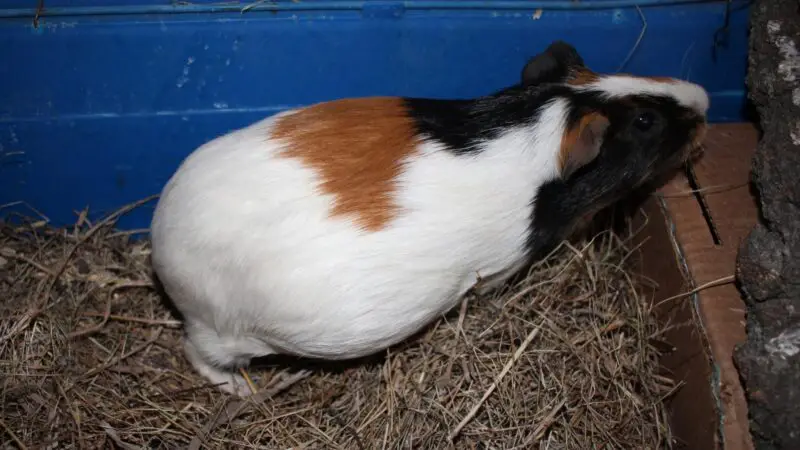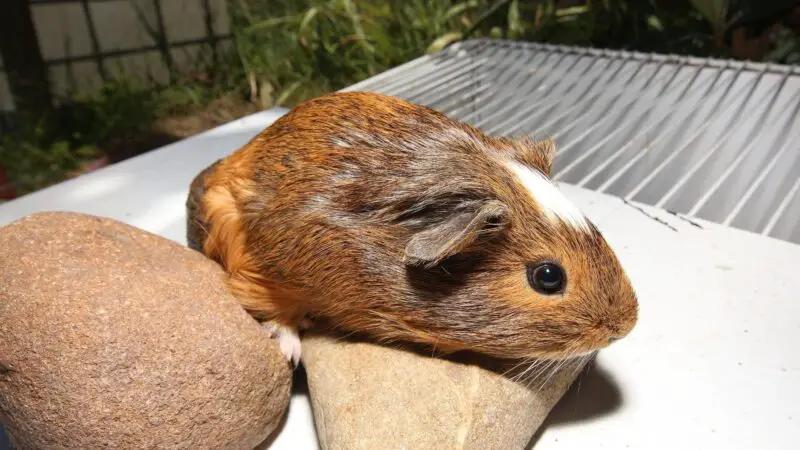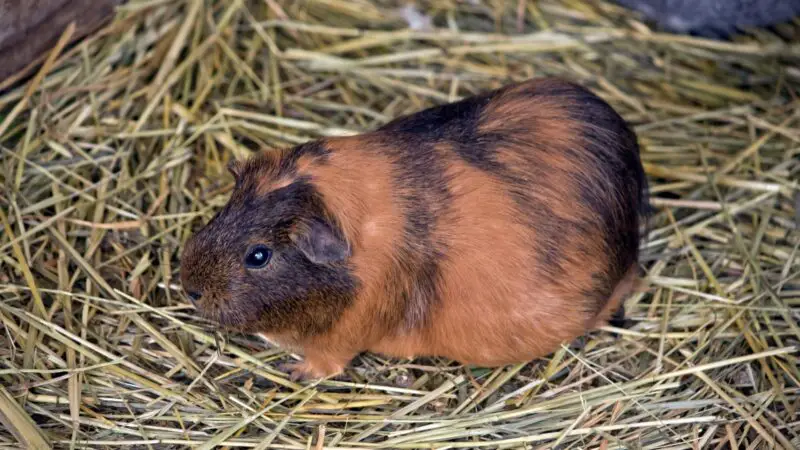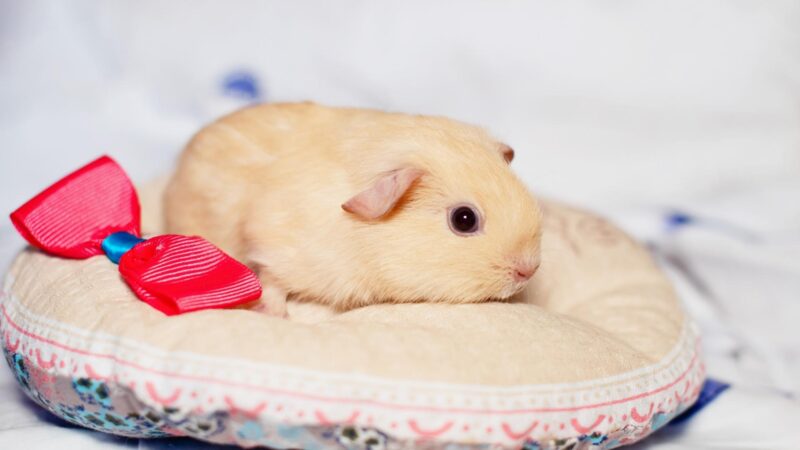The guinea pigs are perfect pets that aren’t needy and are fit for any household. But, if you keep a guinea pig, you are surely curious about their mating habits.
In case your two guinea pigs mate, it is good to be prepared and informed about the pregnancy and what to expect, in time.
How long is a guinea pig pregnant? The gestation period of the guinea pig lasts between 59 and 72 days. Of all rodents, the guinea pigs’ gestation period is the longest. On average, the pregnancy period can last from 63 to 68 days, more or less with general exceptions lasting from 59 to 72 days.
So far, the pregnancy of the guinea pigs might sound too simple; the gestation period is relatively short, with pups being born with open eyes, visible teeth, and full-fur coat.
But, the gestation period and birth of guinea pigs are nothing short of interesting and fascinating. Read on to learn more.
Table of Content
How Long Does Sow Carries Their Pup?

The sow (female) carries the pups on average between 60 and 70 days. The guinea pigs are highly social creatures, and keeping males and females together will most likely result in new pups.
The sows (female guinea pigs) enter a period of fertility for mating every 16 days, which is quite often. In general, guinea pigs are sexually mature at 10 weeks of age or older.
On the other hand, if you want to breed them on purpose, the sow should have her first pups when she is at least 3 months old, or more optimal, 7 months old. Less or much more than this can result in complicated pregnancy. It is advisable to keep track of the age and monthly schedules of these rodents.
Pregnancy and Birth of Guinea Pig

Once the abdomen of the sow is distended, you will obviously know she is pregnant. She will eat more and drink more water.
Even the smallest changes in diet or the cage will put the guinea pig under a lot of stress and complicate her pregnancy. If the pregnant female is stressed, she will eat less, be malnourished and the pregnancy could be endangered.
When it is labor time, there is almost no preparation done by the sow. Your job is to just remove the male guinea pig from the cage to avoid mating again in this tricky period of time.
The whole process of the labor lasts between 10 and 30 minutes, and after each pup, she is into labor again for 10 minutes with the next pup. The process of birth is adorable. You’ll see the sow sitting and squatting and taking care of everything herself. When the pups are born, the mother cleans them and the hardest part is over.
How Many Babies Do Guinea Pigs Have at Once?
The litter of the guinea pigs can range from 1 to 8 pups on average. Most commonly, 2 or 4 is the regular number of healthy, good-looking pups that are born. On a yearly basis, the females can have 5 litters (births) total.
How Old Are Guinea Pigs When They Can Get Pregnant?
Male guinea pigs are sexually mature when they are 3 months old, which is the minimum age. On the other hand, female ones get mature a bit earlier at 2 months of age. But it’s advisable to reproduce at least when they are 3 months old.
The fertility period when a female can mate is called estrous. They have this all year round, but mostly emphasized in the springtime. The length of the estrous is 16 days. Specifically, fertility is highest at nighttime, for 6-11 hours. Once the sow gives birth, she is again entering an estrous period in a short time.
How Can You Tell If a Guinea Pig Is Pregnant?
It is obvious that once a female guinea pig was in the same space as a male guinea pig, the chances of her being pregnant are high.
The first thing is to see her everyday habits. When the pregnancy advances, the sow will have a better appetite, and you’d feed the female guinea pig 3 times more than you usually do.
Hand in hand with the diet changes are the weight changes. Try to measure the female guinea pig if you have a grams/oz. scale. Keep an eye on the weight and write it down constantly, because once pregnant, the guinea pig can weigh double her size (which is usually 1.5 lbs.). This rule goes for mature females, and not developing ones that gain weight naturally.
Gently feel the belly of the female. Be careful and gentle, as if you pet a bird in your hand. Maybe you will feel ‘bumpy’ things on the tummy surface. If you suspect she might be pregnant, she might be in her 6th or 7th week of pregnancy. So the next thing to do is go to the veterinarian for a full physical exam.
Proper Care of a Pregnant Guinea Pig

When you and the vet confirm the pregnancy, it is time for some good and proper care of the sow. Her diet must be taken care of, so she will consume lots of hay pellets (the good kind, fortified), veggies, and fruits rich in vitamin C.
In addition, they can also consume cereals as a tasty and healthy snack-treat and if the vet recommends, more vitamin C as supplements (in case she lacks it a lot).
The sow would also need calcium foods and freshwater all the time. But remember, no parsley for the sow. It is a type of herb that is diuretic, which stimulates urination and it is known to cause miscarriages or induce them.
Other food items to avoid giving to a pregnant sow are:
- Iceberg lettuce
- Potato
- Avocado
- Tomato stem
- Meat and dairy
- All sorts of processed snacks (sweets, chips, and similar)
For the proper environment, some precautions must be taken as well. Keep her cage as it is because even a small change will set her off balance and stress her too much. No loud noises or too much light or darkness. Take care of the temperature as well, too much heat or too much draft will disrupt her coziness.
If you do want to play with her, know that it will be not advisable or possible. The sow will be heavy and move harder around the cage or on the floor, so keep that in mind. Avoid nagging her with baths or brushing or stroking her fur. Let her rest and relax as she pleases.
Proper Care of Guinea Pigs’ Pups

Ensure the cage is ‘baby-proof’ or with good enclosed bars on the sides. Make it a spacious one even before they are born. The bars will keep the pups from escaping, while they still get the chance for air circulation in the best way.
The pups, together with the mom, will be happy for having lots of space to move around in. The normal size now would be a minimum of 8 feet to fit them all.
Have two water bottles. One placed higher for the mom to sip comfortably, and one placed lower for the pups to extend just a tiny little bit and drink.
Be very careful if you pet or hold the small pups. They are adorable, small, fluffy, and soft, and they need a gentle hand on them. The good thing with guinea pigs is that, unlike hamsters, they do not reject their pups if a human hand has touched them.
Determine the gender of the pups and separate the males and females in time. Since guinea pigs are mature for mating early, this way you can avoid pregnancies. Just to be sure to divide them at 3-4 weeks of age.
Always give the pups alfalfa hay and alfalfa pellets, oranges, melon, and vitamin C-rich produce. Ensure the bedding surface is changed regularly. It must be clean, odorless, and comfy soft, so change it at least 2 times weekly.
List of Sources
Vitamin C Requirements of the Guinea-Pig
